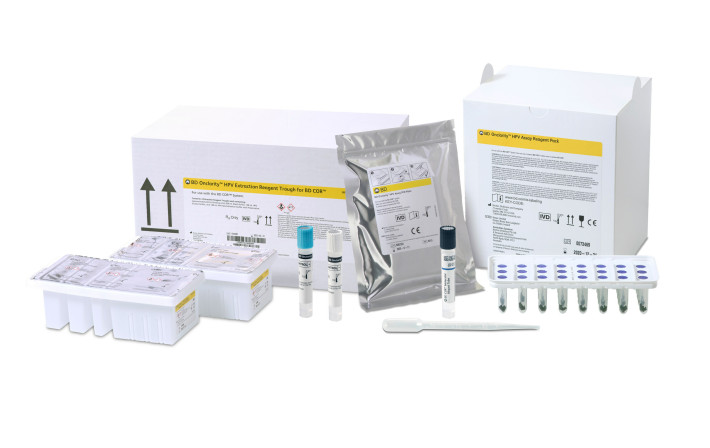Cervical Cancer Screening: The Current State of Testing

Routine cervical cancer screening has been proven very effective for preventing cervical cancer and deaths from the disease.1 Today in the US there are two tests for cervical cancer screening: the HPV test and the Pap test.2 These tests can be used independently or together. If they are combined this is called co-testing.2
The Pap test, also called Pap smear or smear test is the traditional method for screening. It utilizes cytology to look for abnormal cells in the cervix that can lead to cancer.1 When a Pap test is performed and the result is ASC-US then an HPV test is performed, this is called Reflex Testing.3
The HPV test is a molecular test that detects HPV DNA or HPV mRNA. When HPV tests are used alone they are called HPV Primary tests. Today there are only two HPV primary tests approved by the FDA.1,3
Although all screening methods can find cervical cancer precursors before they become cancer, HPV tests are today considered more accurate and reliable than Pap tests,1 and both the American Cancer Society (ACS) and the World Health Organization (WHO) recommend HPV testing as the preferred screening method.1,3
The latest ACS guidelines recommends cervical cancer screening with an HPV test alone every 5 years for everyone with a cervix from age 25 until age 65. If HPV testing alone is not available, it is recommended to screen with an HPV/Pap co-test every 5 years or a Pap test every 3 years.1 The guidelines do not recommend making a screening decision based on whether an individual has had the vaccine. But, over time, as rates of HPV vaccination increase among people who are eligible for cervical cancer screening, we may see more changes in screening recommendations down the road.1 For example, as the vaccinated population increases, HPV 16 and 18 are decreasing in prevalence, making it crucial to identify the other high-risk HPV genotypes.5-7
The evolving cervical cancer screening and management guidelines and the changes in HPV genotype prevalence are impacting clinical management and calling for a shift towards next-generation HPV screening with extended genotyping and favoring a personalized risk-based approach.3,5-7
Identifying high-risk genotypes helps physicians send the right women to colposcopy by helping them identify the true risk of CIN3+ disease and ensures that all genotypes with results above the 4% risk threshold are referred. It also helps avoid sending patients to coloscopy when that is not needed.3,5
Abbreviations:
ACS, American Cancer Society; ASC-US, Atypical Squamous Cells of Undetermined Significance; CIN, cervical intraepithelial neoplasia, DNA, Deoxyribonucleic acid; FDA, Food and Drug Administration; HPV, human papillomavirus; hr, high-risk; mRNA, messenger RNA; Pap test, Papanicolaou test; US, United States; WHO, World Health Organization
References:
1. ACS’s Updated Cervical Cancer Screening Guidelines Explained. National Cancer Institute. 2020. Accessed 16 Sept. 2022.
2. Screening Tests for Cervical Cancer. American Cancer Society. 2020. Accessed 16 Sept. 2022.
3. Perkins RB et al. J Low Genit Tract Dis. 2020;24(2):102-131.
4. WHO guideline for screening and treatment of cervical pre-cancer lesions for cervical cancer prevention, second edition. WHO. 2021. Accessed 16 Sept. 2022.
5. Bonde JH et al. J Low Genit Tract Dis. 2020;24(1):1-13.
6. Wright TC et al. Gynecol Oncol. 2019;153(2):259-265.
7. Drolet M et al. Lancet. 2019;394(10197): 497-509.
8. Stoler MH et al. Gynecol Oncol. 2019;153(1):26-33.



